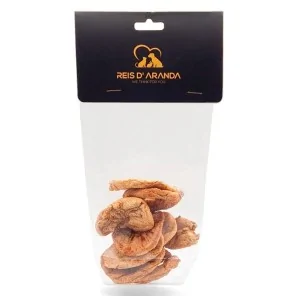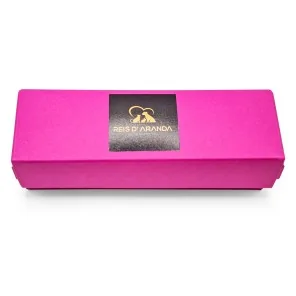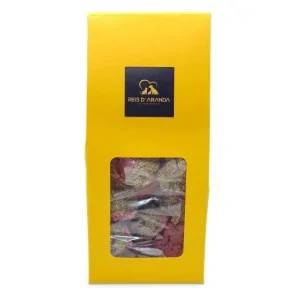The Tornjak originated from genetically homogeneous, almost extinct, indigenous shepherd dogs. These dogs have...
THE TEDDY DWERG DWARF RABBIT
THE TEDDY DWERG DWARF RABBIT
Originally from Germany, the Teddy Dwerg is a long-haired dwarf rabbit (carrier of the dwarfism gene). His coat is not at all like that of the Angora, as it is made up of different genes, it is soft, long and striking, has round, curious eyes, tiny ears and a very sweet personality, ideal for families who are committed to the grooming care he requires.
The Teddy Dwerg is a fairly recent breed, being recognised as a breed in countries such as Spain (since 2012, by the "Asociación Española de Criadores de Conejos Enanos" -AECCE- and the "Asociación Nacional de Cunicultura Familiar" -ASNAC- since 2013); Portugal, the Netherlands, the Czech Republic or Sweden, for example, the latter through the TEDDYSÄLSKAPET -Swedish Teddy Rabbit Club-; curiously, it was in 2012 when the Teddy Dwerg became the "most popular breed in Germany" but today this country does not recognise it as a rabbit breed.
As far as Spain is concerned, the improvement of this breed came through the kennels "MASCOTAS DEL SUR" and "FLUFFY TEDDYS" (now defunct, considered to date as one of the best quality Spanish dwarf rabbit kennels), who made great advances in the breed.
THE TEDDY DWERG STANDARD
The standard is the norm that marks how a purebred animal should be: how its body should be, its ears, the type of coat...
The Teddy Dwerg (like other dwarf breeds) may vary from one country to another, but here we will follow the Spanish standards, offered by AECCE and ASNAC.
WEIGHT [10]
-The adult Teddy Dwerg weighs between 800gr and 1,500kg.
The ideal weight for adult males (over 6 months) is between 1 kilo and 1,350kg.
Adult females (over 6 months) have an ideal weight of 1,200-1,350kg.
ADULT FEMALES WEIGHING LESS THAN ONE KILO (1KG) ARE NOT RECOMMENDED FOR BREEDING, AS THEY MAY SUFFER FROM CALVING PROBLEMS DUE TO THEIR SMALL SIZE.
TYPE AND STRUCTURE [20]
-The Teddy Dwerg has a short cylindrical body, broad and sturdy, with a rounded back and, when viewed from above, a uniform structure from head to hips. Its legs are short and well positioned under the body, the tail is straight and firm. As a curiosity, the Teddy Dwerg does not have a dewlap, and if it did, it would be completely undesirable in both sexes.
HAIR [35]
- STRUCTURE AND CONDITION [20]
The coat of the Teddy Dwerg is thick and abundant, not at all cottony to the touch as would be that of the Angora. It has a woolly undercoat and a coarser outer coat (covering coat), its growth is slow.
- DENSITY AND LENGTH [15].
The coat of the Teddy Dwerg is approximately 8 cm long, being slightly shorter on the legs and belly.
The head and ears should be well covered with hair, with the fringe covering the eyes.
HEAD AND EARS [15]
-The head of the Teddy Dwerg is broad, with a broad, flat muzzle and full cheeks; it is very striking. The neck is very short, almost invisible and has NO dewlap.
The eyes are large, lively and bright without being protruding, and may be in all colours regardless of coat colour. The ears are erect, slightly thick and well covered with hair, in a rounded V-shape and their size is about 4-5cm (the maximum accepted is 6.3cm).
COLOUR [15]
-In the Teddy Dwerg (Spanish standard) all colours and patterns known to the Rabbit Nomenclature are accepted, as well as their mixtures, however creative they may be.
The Gen Vienna (VM) is admitted in show.
PRESENTATION AND CARE [5]
-The Teddy Dwerg must be perfectly groomed, without knots, dirt or obvious signs of abandonment or neglect. Hair clippings beyond the genital area (hygienic), whether total or partial, are not permitted.
FAULTS
-Narrow shoulders, ears not erect or with little hair, narrow or tapering face, little hair on the head, signs of moulting, "saddle" present on the back (hair naturally shorter on the back), knots, nails not short but not exaggerated, coat slightly incorrectly textured, bite scars on ears or nose.
DISQUALIFICATIONS:
-Animals of thin build and slight build, crooked legs, strabismus, animals with weights above or below maximum adult weight, excessively long or hairless ears, bald spots, animals with full or partial haircuts, excessively long nails, overdeveloped, crooked, broken or mutilated teeth, malocclusion, purulent eyes and external parasites. Clear signs of illness, abandonment, mistreatment, malnutrition or obesity.
SPECIFIC CARE OF THE TEDDY DWERG RABBIT
The Teddy Dwerg rabbit, due to the characteristics of its coat and morphology, requires daily brushing (at least 3 times a week) and daily eye checks to prevent the entry of any hair, which could lead to conjunctivitis.
As with any other rabbit (be it a breed or a mongrel), they should be weighed every week and these weights should be written down in a notebook, which will help to observe any strange increase or decrease in weight (it is normal for them to put on a little weight in winter and lose weight in summer). We will take advantage of this time to check their incisors.
They should be checked regularly by an exotic vet, vaccinated against myxomatosis and viral haemorrhagic disease every year and dewormed whenever necessary, after a stool analysis.
TYPICAL DISEASES OF THE TEDDY DWERG
The Teddy Dwerg rabbit is a fairly healthy breed, so its "typical illnesses" are shared by other rabbits (whether they are purebred or not). We will now talk about some of them:
- MALOCLUSION: Malocclusion consists in the incorrect position of the teeth and their deformation, either due to deficient genetics (carrier of this malady) or due to trauma (blow, infection, very advanced age...). It is very rare for an animal from an ethical breeder to have malocclusion, being much more frequent in mongrels or in those that come from macro-farms and are sold in ordinary pet shops. Most ethical breeders deliver their animals with a veterinary certificate stating that they have no visible diseases or malformations (malocclusion).
- MITE: Mites are parasites that live everywhere: the skin, the beds, the sofa? And they reproduce more actively with lowered defences, which is why they especially attack immunocompromised or very old animals. They can be recognised as white, powdery-looking plaques on the skin, produce bald patches and, if not treated correctly, lead to mange. They are treated with topical pipettes at the vet.
- CONJUNCTIVITIS: Conjunctivitis is an eye infection that occurs when dust, hair or a micro-organism comes into contact with the eye, irritating it and causing it to ooze; if left untreated, it can lead to ulcers of varying severity and, in the worst cases, loss of sight. In the Teddy Dwerg we must check the eyes every day and comb the hair in the area well with a narrow-toothed metal comb. The REW (albino) colour is the most prone to suffer from this disease as the coat is slightly finer and more abundant than the other colours and patterns. The solution is simple with eye drops, but this should be assessed by a vet.
THE GROOMING OF THE TEDDY DWERG RABBIT
The Teddy Dwerg rabbit is very easy to maintain if we follow a few simple steps. For his care we will use a long-toothed card, a narrow-toothed metal comb (with which we will check that there are no knots and brush the area around the eyes) and a dry moisturising spray, which we will use before brushing to prevent the fur from breaking.
The movements we will make will be gentle but firm, the fur of the Teddy Dwerg is delicate and its growth is very slow. We will not cut it unless it is absolutely necessary: illness, neglect...
Even if it is a long-haired rabbit, we cannot bathe it unless it is an exceptional case, such as an animal with incontinence problems (age, paralysis...) or whose condition is that of abandonment (traditional or domestic) and is extremely dirty. In this case, use a very moisturising shampoo followed by a moisturising mask, rinse very well with warm, pleasant water, and always dry with a professional grooming blow-dryer, brushing at the same time until it is very dry (otherwise it may catch a cold or develop fungus).
If we don't dare or don't have the knowledge to do this, we will go to a professional groomer who specialises in rabbits or has experience with cats, as the handling is very similar.
THE PERSONALITY OF THE TEDDY DWERG RABBIT
What is the personality of the Teddy Dwerg rabbit like? The Teddy Dwerg rabbit is a docile and cheerful animal, with more sparkle than its floppy-eared "cousin" (the Teddy Lop), always alert and very curious, sociable with humans and other pets and adores children of all ages, but both parents and children should be aware of the care they require and their physical fragility.
It is ideal for families who want a long-haired but small-sized bunny.
Leave a comment
Log in to post comments















